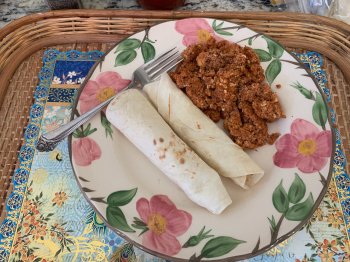This is a soapbox issue for me. There are no hormone supplements approved for use in chicken. They were experimented with, and banned, in the 1950's. So chicken sold as "hormone free" is attesting freedom from something that does not exist!
Now fillers has to do with how the chicken was processed. And I totally agree with you there!
Yeah, I'm usually skeptical of the term organic. Organic produce can be sprayed with organic chemical pesticides (yes, they exist) and not ones you can find off of a blog and make yourself. A large number of them pose a serious health issue to those doing the spraying if it's done close up on foot. When you read the legal language for various countries, or groups like the EU, you soon realize their standards for upkeep are terrible. The standards for housing units were tightened up after a certain date but I know farms sell those to newer ones because I know people in the EU who run free range chicken and egg farms. They all skirt the law without violating it. The whole care for animals or produce is a farce once you begin investigating things yourself. I can tell you right now the EU requirements for egg laying chickens in feed space at X amount of chickens is laughable. These are the minimum requirements and these are ones a lot of European farms adhere to to keep costs low. The EU directive for chickens on quality is mainly on vegetation, and states no specific amount of coverage. Anything else are size minimums, again, which farms go just above to keep costs low.
Having eaten mass produced eggs, cage free, and ones taken mere moments ago from a hen's bottom from under her, I can tell you the flavor tends to be the same. Yolk color comes from what they eat and isn't indicative of quality of feed. You could feed mass produced, cramped, dirt hens paprika or cheap probiotic powders and the yolk color would deepen. Certain vegetation will give it a green hue. We have a neighbor who owns a small plot of land way out in the middle of nowhere and they often bring some eggs from their chickens. Covered in dirt and straw. Tastes the same as the store bought stuff. Yolk color is a bit deeper, but that's because of the feed. They were surprised when I asked how often they fed their chickens carotenoid rich food.
What's worse is that a commercial orchard in the EU and the US, legally per language, can go from non-organic to organic in a matter of a few years. The issue is that a lot of chemicals remain in the soil for years and years. It's 1 year for swine and poultry in the EU, 2 years for grazing land. US is about the same.
I feed my own fruit trees naturally derived feed. I can go overboard with nitrogen rich compounds and encourage general growth and then introduce phosphor rich feed to encourage flower development and fruit settings. I have an alright understanding of organic chemistry in this regard, including making blend products and slow release sticks myself. I'm highly manipulating what could be possibly all naturally.
You want to see real organic fruit. Go out into the wild. It's going to be small. And I can guarantee you any organic farm worth their land will be doing what I do with organic, naturally derived products.


